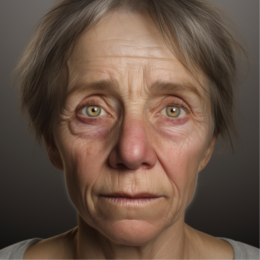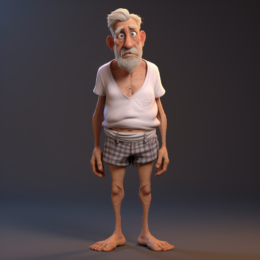How Is Anxiety Diagnosed: An Essential Guide to Recognizing and Tackling Anxiety

Hey there, dear readers! You’ve probably clicked on this article because you’ve asked yourself, “What does anxiety feel like?” Or maybe you’re trying to understand how anxiety affects someone you care about. So, let’s discuss the ins and outs of anxiety diagnosis, symptoms, causes, treatment, and much more. We also want to introduce you to Sara, who has been struggling with anxiety and will help us understand the topic better. But first, let’s dig into what anxiety really is. Oh, and don’t forget to share your own experiences at the end of the article!
What Is Anxiety
Anxiety is that knot in your stomach before a big presentation or that sudden surge of worry when you can’t find your keys. But sometimes, these feelings go beyond the occasional nervous moment. When anxiety begins to interfere with daily life, it may be more than just typical stress.
Statistics:
- According to the Anxiety and Depression Association of America, Anxiety disorders affect 40 million adults in the United States.
- Women are twice as likely to be affected as men.
How Is Anxiety Diagnosed
Diagnosing anxiety isn’t a one-and-done deal; it’s often a multi-step process that requires a comprehensive evaluation. Typically, the journey to diagnosis begins with a visit to your primary care physician. Your doctor will generally ask you a series of questions about your emotional and physical well-being, and these questions aim to rule out any other potential causes for your symptoms, such as other medical conditions or medication side effects.
They may carry out various tests, such as blood tests or heart rate measurements, to rule out any underlying physical conditions. Once they’ve gathered this information, you’re likely to receive a referral to a mental health specialist like a psychologist or psychiatrist for further evaluation.

Statistics:
- A 2019 study showed that only about 36.9% of those suffering receive treatment.
- Diagnostic interviews are the most common method for diagnosing anxiety disorders.
Like Sara, who finally decided to visit her doctor after months of restless nights and constant worrying, you too may discover that what you’re experiencing isn’t just stress. It’s important to know what causes anxiety so it can be properly diagnosed and treated.
Anxiety Symptoms
When talking about what does anxiety feel like, symptoms can range from mild to severe and often include:
- Constant worrying or obsession over small or large concerns
- Restlessness and feeling keyed up or on edge
- Fatigue
- Difficulty concentrating
Statistics:
- According to a 2020 survey, 77% of people regularly experience physical symptoms caused by anxiety.
Quick Poll
Causes of Anxiety
There’s no one-size-fits-all answer to what causes anxiety. It’s often a combination of factors like:
- Genetics
- Environmental factors
- Medical conditions such as heart disease, diabetes, or hormonal imbalances
Just like Sara, who found that her anxiety escalated when she started a high-pressure job, understanding the underlying causes can be an essential step in how to control anxiety.
How to Treat Anxiety
So, how to reduce anxiety once diagnosed? There are a variety of treatments available, including:
- Medication such as antidepressants or anti-anxiety medication
- Cognitive-behavioral therapy (CBT)
- Lifestyle changes like regular exercise and improved diet
Statistics:
- A 2018 study showed that CBT was effective in treating anxiety disorders in 46% of cases.
Prevention of Anxiety
Preventing anxiety may not always be fully possible, but there are numerous proactive steps to help manage its symptoms and potentially reduce its onset. Here’s a breakdown:
- Regular Exercise: Physical activity is not just good for the body but also for the mind. Whether it’s cardio, weightlifting, or even a simple walk, exercise can release endorphins, which act as natural mood lifters.
- Balanced Diet: Consuming a diet rich in vitamins, minerals, and essential fatty acids can help in balancing your mood. Foods like salmon, blueberries, and dark leafy greens can be beneficial.
- Reduce Caffeine and Alcohol: Stimulants and depressants can play havoc with your mood and anxiety levels. Limiting or avoiding these can have a positive impact.
- Quality Sleep: Lack of sleep can exacerbate anxiety symptoms. Aim for 7-8 hours of quality sleep, sticking to a regular sleep schedule whenever possible.
- Mindfulness Techniques: Practicing mindfulness through meditation or guided imagery can help you become aware of your thoughts and feelings, providing you with tools to combat anxiety as it arises.
- Deep Breathing and Relaxation: Techniques like the 4-7-8 breathing method can calm your mind in moments of stress, helping to prevent full-blown anxiety attacks.
- Identify Triggers: Being aware of situations or stressors that trigger your anxiety can be invaluable. Once identified, you can work on coping mechanisms specifically tailored to these triggers.
- Regular Medical Check-ups: Sometimes, anxiety could be a symptom of an underlying health issue. Regular check-ups can help in early identification and treatment.
By integrating these points into your daily routine, you’re arming yourself with an effective toolkit for reducing the onset and impact of anxiety. Just like Sara used a combination of these strategies to manage her symptoms, you can develop a comprehensive approach tailored to your own lifestyle and needs.
Conclusion
Anxiety is a complex issue, but understanding how it is diagnosed and treated can bring relief. Just like Sara, who found her peace of mind through CBT and lifestyle changes, you too can take steps to manage your anxiety effectively.
PLEASE SHARE YOUR EXPERIENCE AND THE COMMENTS BELOW, SO WE CAN HELP EACH OTHER WITH THE KNOWLEDGE YOU HAVE GAINED.
References
- Anxiety and Depression Association of America. (n.d.). Facts & Statistics. Retrieved from ADAA
- American Journal of Psychiatry. (2019). Treatment of Anxiety Disorders. Retrieved from American Journal of Psychiatry
- Journal of Anxiety Disorders. (2020). The Efficacy of Cognitive Behavioral Therapy. Retrieved from Journal of Anxiety Disorders





